Text

Congratulations to José Carioca & Panchito Pistoles! You are Disney's Actual First Gay Character(s) according to Tumblr!!
#disney#poll tournament#tumblr polls#three caballeros#jose carioca#panchito pistoles#ze carioca#panjose
134 notes
·
View notes
Text



A showdown among the couples, apparently.
José Carioca & Panchito Pistoles from The Three Caballeros (1944)
Do Not Separate: These two are rarely seen without one another, due to the fact that they are two-parts of a trio, leading fans to interpret them as a couple.
It’s Fanon: Due to the line “We’re three caballeros, three gay caballeros”, many fans, despite the evolution of the term “gay”, have elected to ship all three caballeros together.
VS
Li Shang & Fa Mulan/Ping from Mulan (1998)
Gay as an Umbrella Term: The character arc of Mulan/Ping and how they relate to their gender roles has been considered relatable to transgender fans.
It’s a Secret: Throughout the film, Mulan/Ping attempts to pass as male despite being born female, in a way that mirrors the experiences of transgender individuals at many instances.
Do Not Separate: While Mulan/Ping is considered queer on their own, Shang is often read as bisexual due to the way he exhibits interest in Mulan/Ping regardless of how they present.
VS
Dr. Jumba Jookiba & Agent Wendy Pleakley from Lilo & Stitch (2002)
Do Not Separate: Though not together by choice in their source material, the two end up bonding as time goes on and are essentially always depicted as a duo within marketing and extended canon, allowing them to be read as a couple.
Wait, You Were Joking?: Within the film, despite being referred to with masculine pronouns, Pleakley disguises himself in women’s clothing to blend in, which is intended to be comedic. This becomes a running gag in the extended canon.
#disney#poll#tumblr polls#three caballeros#jose carioca#panchito pistoles#mulan#fa mulan#fa ping#li shang#lilo and stitch#dr jumba#agent pleakley
66 notes
·
View notes
Text


José Carioca & Panchito Pistoles from The Three Caballeros (1944)
Do Not Separate: These two are rarely seen without one another, due to the fact that they are two-parts of a trio, leading fans to interpret them as a couple.
It’s Fanon: Due to the line “We’re three caballeros, three gay caballeros”, many fans, despite the evolution of the term “gay”, have elected to ship all three caballeros together.
VS
Ursula from The Little Mermaid (1989)
There’s History There: Ursula was notably inspired by the drag legend, Divine, in design, narrative role, and some of her mannerisms.
Outcast: It’s a common reading that Ursula’s role as an outcast who aids Ariel, who also feels ostracized, to her own benefit and Ariel’s detriment, parallels the phenomenon of predation on newly-out queer people.
20 notes
·
View notes
Text


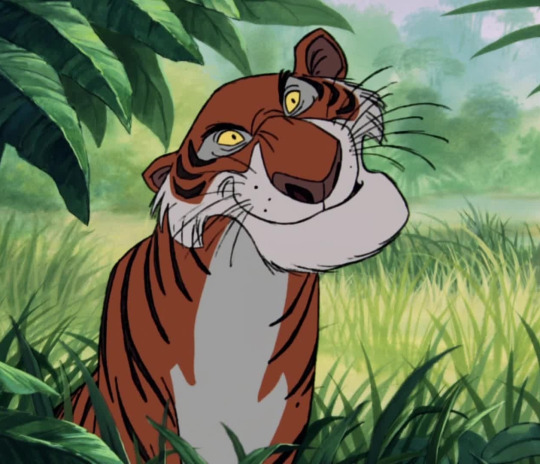
Li Shang & Fa Mulan/Ping from Mulan (1998)
Gay as an Umbrella Term: The character arc of Mulan/Ping and how they relate to their gender roles has been considered relatable to transgender fans.
It’s a Secret: Throughout the film, Mulan/Ping attempts to pass as male despite being born female, in a way that mirrors the experiences of transgender individuals at many instances.
Do Not Separate: While Mulan/Ping is considered queer on their own, Shang is often read as bisexual due to the way he exhibits interest in Mulan/Ping regardless of how they present.
VS
LeFou from Beauty and the Beast (1991)
It’s Canon: As of the live action remake of Beauty and the Beast in 2017, LeFou made headlines as “Disney’s First Gay Character!”.
Obsession: LeFou, in both the original animated film and the live action remake, is the lackey to the antagonist Gaston, and is characterized by his devotion and loyalty to him.
VS
Shere Khan from The Jungle Book (1967)
It’s Fanon: Shere Khan exhibits what is considered to be campy behavior throughout the source material, leading him to be considered among the many queer-coded villains within Disney animated canon.
#disney#poll#tumblr polls#mulan#fa mulan#fa ping#li shang#beauty and the beast#lefou#the jungle book#shere khan
40 notes
·
View notes
Text


Dr. Jumba Jookiba & Agent Wendy Pleakley from Lilo & Stitch (2002)
Do Not Separate: Though not together by choice in their source material, the two end up bonding as time goes on and are essentially always depicted as a duo within marketing and extended canon, allowing them to be read as a couple.
Wait, You Were Joking?: Within the film, despite being referred to with masculine pronouns, Pleakley disguises himself in women’s clothing to blend in, which is intended to be comedic. This becomes a running gag in the extended canon.
VS
Luca Paguro & Alberto Scorfano from Luca (2021)
Do Not Separate: The two characters quickly become inseparable during the first act of Luca, to the point where Alberto becomes emotionally dependent on Luca and antagonizes anyone who could potentially take him away.
It’s a Secret: Both Luca and Alberto spend the film trying to prevent their identities as sea monsters from being exposed to a town that is openly hostile towards them. Due to the characters’ ages and the film’s time period, it’s a common interpretation to read the film as a metaphor for discovering your sexual orientation within a homophobic town.
It’s Fanon: Beyond popular fan interpretation, there are crew members who worked on the film that also consider the two characters to be a potential couple.
43 notes
·
View notes
Text


José Carioca & Panchito Pistoles from The Three Caballeros (1944)
Do Not Separate: These two are rarely seen without one another, due to the fact that they are two-parts of a trio, leading fans to interpret them as a couple.
It’s Fanon: Due to the line “We’re three caballeros, three gay caballeros”, many fans, despite the evolution of the term “gay”, have elected to ship all three caballeros together.
VS
Mortimer Mouse, who is a part of the Mickey & Friends cast (debut 1936)
It’s Fanon: His excessively flamboyant movement within his debut theatrical short has lead to fans, in the modern era, jokingly or facetiously insisting that Mortimer is queer.
19 notes
·
View notes
Text
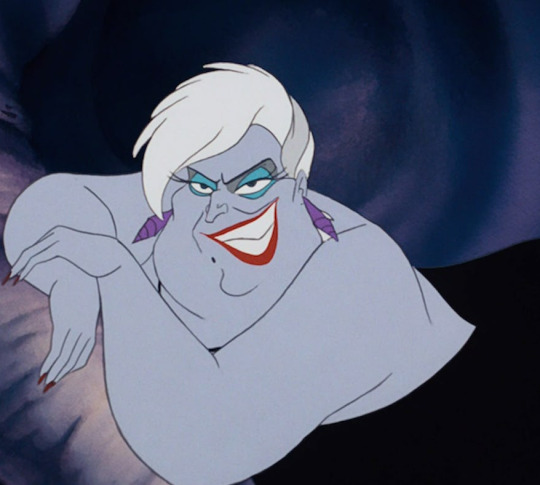

Ursula from The Little Mermaid (1989)
There’s History There: Ursula was notably inspired by the drag legend, Divine, in design, narrative role, and some of her mannerisms.
Outcast: It’s a common reading that Ursula’s role as an outcast who aids Ariel, who also feels ostracized, to her own benefit and Ariel’s detriment, parallels the phenomenon of predation on newly-out queer people.
VS
Scar from The Lion King (1994)
It’s Fanon: He exhibits overtly dramatic and effeminate behavior throughout his appearance in his source material, in a way that fans have interpreted as queer in nature.
Controversial: Scar is considered the most iconic queer-coded Disney villain, having received both praise (in terms of community reclamation) and criticism (due to the homophobic nature of queer-coding villains) for the way he is depicted in the film.
16 notes
·
View notes
Text


Baloo & Bagheera from The Jungle Book (1967)
It’s Fanon: Within the film, Baloo insinuates that he would consider becoming romantically involved with a panther (directed towards Bagheera) if one were to ask, leading fans to ship the two characters together.
Do Not Separate: While not exclusively depicted together, these characters are typically read as queer due to the way they interact with one another.
Wait, You Were Joking?: Baloo wears a grass skirt within the film, in a way that’s played for humor, and is regularly depicted in drag as a joke within extended canon.
VS
Li Shang & Fa Mulan/Ping from Mulan (1998)
Gay as an Umbrella Term: The character arc of Mulan/Ping and how they relate to their gender roles has been considered relatable to transgender fans.
It’s a Secret: Throughout the film, Mulan/Ping attempts to pass as male despite being born female, in a way that mirrors the experiences of transgender individuals at many instances.
Do Not Separate: While Mulan/Ping is considered queer on their own, Shang is often read as bisexual due to the way he exhibits interest in Mulan/Ping regardless of how they present.
49 notes
·
View notes
Text


The Seven Dwarfs from Snow White and the Seven Dwarfs (1937)
Do Not Separate: All seven men live together, without any interaction with women prior to the film, which has lead to people jokingly insinuating that they exist as polycule.
VS
LeFou from Beauty and the Beast (1991)
It’s Canon: As of the live action remake of Beauty and the Beast in 2017, LeFou made headlines as “Disney’s First Gay Character!”.
Obsession: LeFou, in both the original animated film and the live action remake, is the lackey to the antagonist Gaston, and is characterized by his devotion and loyalty to him.
#disney#poll#tumblr polls#snow white and the seven dwarfs#the seven dwarfs#beauty and the beast#lefou
11 notes
·
View notes
Text

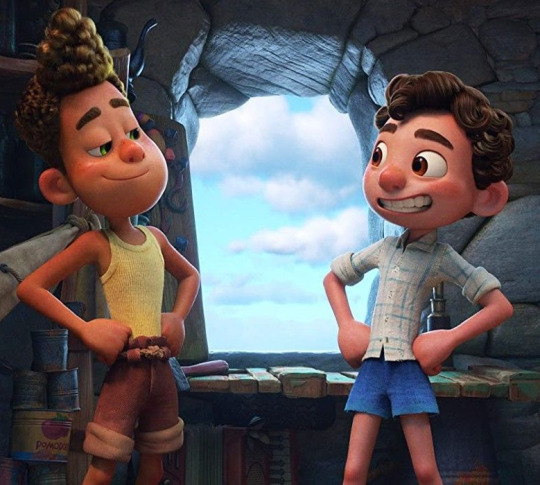
Remy from Ratatouille (2007)
Gay as an Umbrella Term: Due to the sexual dimorphism found in real-life rats, Remy is jokingly considered to have been born female as he’s significantly smaller than the male rats in his family.
It’s a Secret: In the film, Remy has to keep his lifestyle choices a secret from his family out of fear of repercussion, leading to people facetiously referring to him as gay.
VS
Luca Paguro & Alberto Scorfano from Luca (2021)
Do Not Separate: The two characters quickly become inseparable during the first act of Luca, to the point where Alberto becomes emotionally dependent on Luca and antagonizes anyone who could potentially take him away.
It’s a Secret: Both Luca and Alberto spend the film trying to prevent their identities as sea monsters from being exposed to a town that is openly hostile towards them. Due to the characters’ ages and the film’s time period, it’s a common interpretation to read the film as a metaphor for discovering your sexual orientation within a homophobic town.
It’s Fanon: Beyond popular fan interpretation, there are crew members who worked on the film that also consider the two characters to be a potential couple.
64 notes
·
View notes
Text
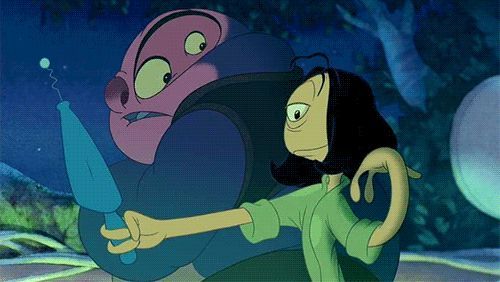

Dr. Jumba Jookiba & Agent Wendy Pleakley from Lilo & Stitch (2002)
Do Not Separate: Though not together by choice in their source material, the two end up bonding as time goes on and are essentially always depicted as a duo within marketing and extended canon, allowing them to be read as a couple.
Wait, You Were Joking?: Within the film, despite being referred to with masculine pronouns, Pleakley disguises himself in women’s clothing to blend in, which is intended to be comedic. This becomes a running gag in the extended canon.
VS
Emperor Kuzco from The Emperor’s New Groove (2000)
It’s Fanon: Kuzco is notably characterized by his dramatics and flamboyancy, to the degree that he was jokingly considered an honorary Disney Princess by fans.
Lack of Love Interest: In the film, he blatantly turns down potential brides for arbitrary reasons, and ultimately has no love interests outside of extended canon.
59 notes
·
View notes
Text

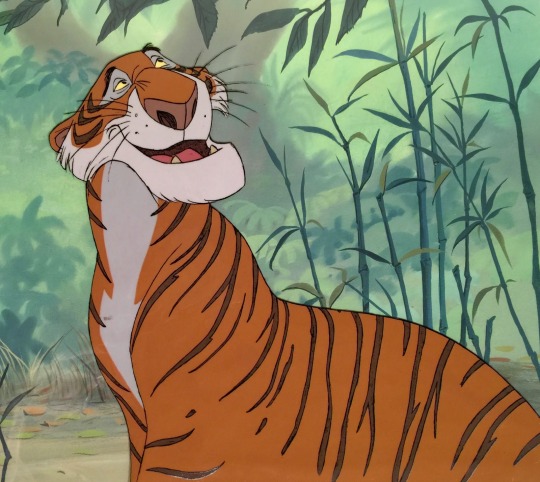
Terk from Tarzan (1999)
Gay as an Umbrella Term: Terk is considered to be visually and vocally androgynous, as her gender is called into question by those who have seen the film constantly.
Wait, You Were Joking?: The narrative pokes fun at her lack of femininity, as Terk is made to wear a dress during the second act of Tarzan in order to disguise herself as Jane, to very little effect to every character other than Kerchak.
VS
Shere Khan from The Jungle Book (1967)
It’s Fanon: Shere Khan exhibits what is considered to be campy behavior throughout the source material, leading him to be considered among the many queer-coded villains within Disney animated canon.
20 notes
·
View notes
Note
how autistic are you
Extremely, next question.
14 notes
·
View notes
Note
propaganda for Remy: his story was literally written to resemble coming out as queer to a heteronormative family. he also lives in Paris with a bisexual roommate, idk what’s gayer than that.
^
6 notes
·
View notes
Text
Askbox is now open for propaganda only!
3 notes
·
View notes
Text
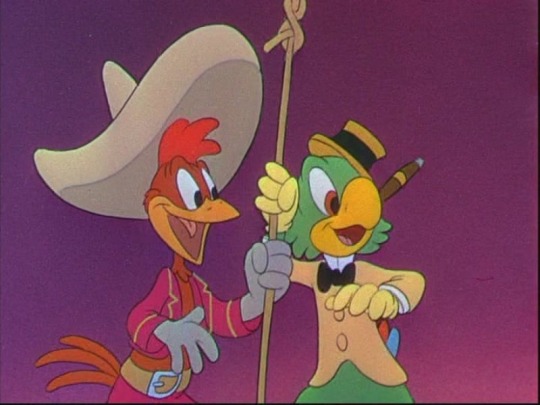

José Carioca & Panchito Pistoles from The Three Caballeros (1944)
Do Not Separate: These two are rarely seen without one another, due to the fact that they are two-parts of a trio, leading fans to interpret them as a couple.
It's Fanon: Due to the line "We're three caballeros, three gay caballeros", many fans, despite the evolution of the term "gay", have elected to ship all three caballeros together.
VS
Timon & Pumbaa from The Lion King (1994)
Do Not Separate: These two are always depicted together as a pair, due to the fact that they fulfill the same narrative role in tandem in their source material. This has lead fans to interpret them as a couple.
Outcasts: The two are introduced as social outcasts, with multiple reasons being given in canon, including their lifestyle choices.
Wait, You Were Joking?: Via improvised joke, Timon dons drag during the third act of The Lion King.
#disney#poll#tumblr polls#the three caballeros#jose carioca#panchito pistoles#the lion king#timon#pumbaa
63 notes
·
View notes
Text
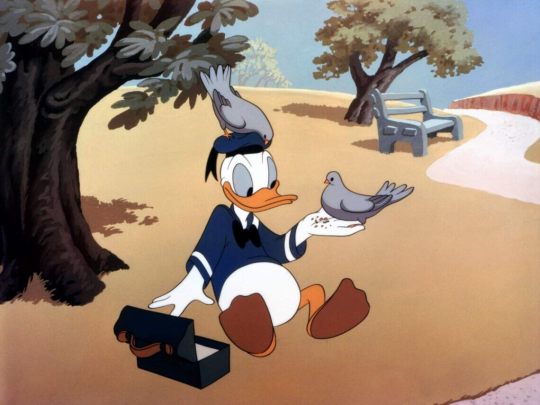
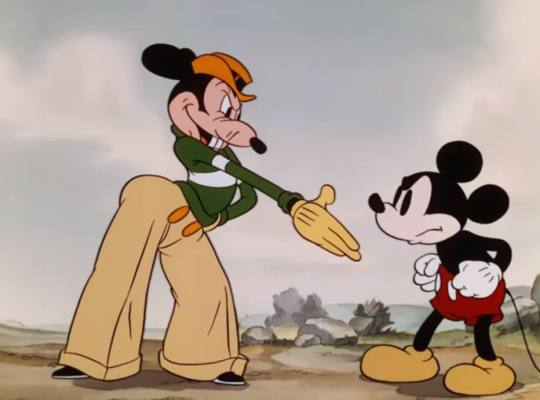
Donald Duck, who is a part of the Mickey & Friends cast (debut 1934)
It's Fanon: Due to his connection to the Three Caballeros, fans have elected to ship him with José Carioca and Panchito Pistoles.
Gay as an Umbrella Term: His relation to his twin sister, who is often depicted as visually identical to Donald (outside of gendered design markers like hair and eyelashes) have lead some fans to interpret Donald as transgender.
VS
Mortimer Mouse, who is a part of the Mickey & Friends cast (debut 1936)
It's Fanon: His excessively flamboyant movement within his debut theatrical short has lead to fans, in the modern era, jokingly or facetiously insisting that Mortimer is queer.
29 notes
·
View notes